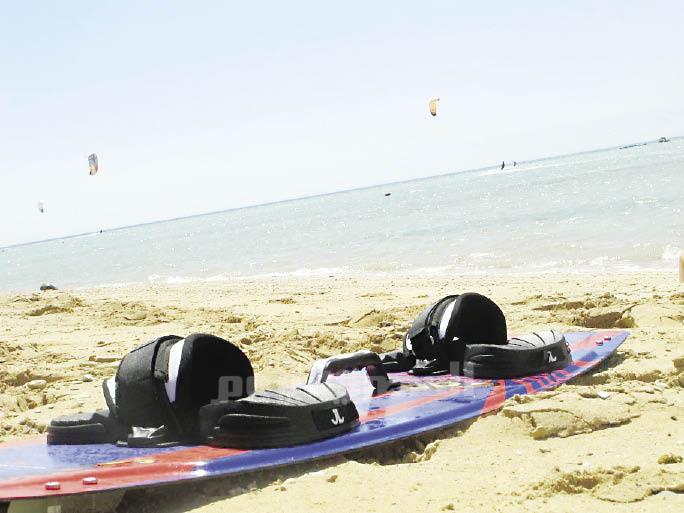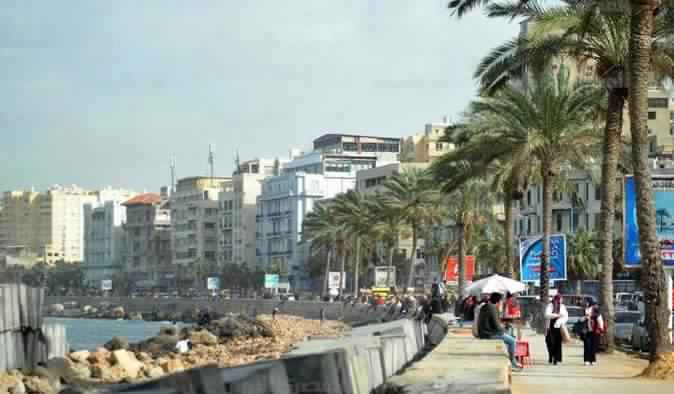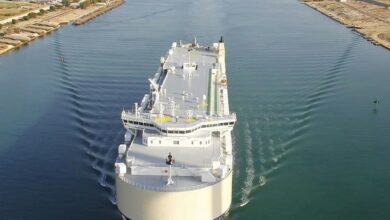
When visiting Egypt’s many beachside towns along the Red Sea coastline, it is difficult to look past the recent outbreak of colorful kites that adorn the blue skies.
Kiteboarding has taken Egypt and the international water sports community by storm, becoming one of the fastest-growing new sports, both locally and abroad. After kiteboarding’s addition to the 2016 Olympics, kiters from around the globe are gearing up to represent their country in the coveted competition.
The sport combines elements of windsurfing, wakeboarding, surfing, paragliding and gymnastics — imagine skimming along the water on a wakeboard at full speed, then getting ripped off the sea and gliding through the air for five to six seconds. Managing the kite, the board and water requires a complete integration of speed, action and adrenaline, giving boarders a floating feeling of freedom.
Sherif Abu Zeid, an avid local kiteboarder and co-founder of Fly Kitesurfing in the Red Sea towns of Ras Sudr and Ain Sokhna, describes the trend.
“In the early years, you only saw a couple kites popping up at windsurfing centers in Hurghada and Gouna. Now, most of windsurfing centers have been converted into kitesurfing centers,” he says.
Kiteboarding is still in its infancy but has continued increase in popularity since its inception about 15 years ago. Then, kiteboarding was recognized as an extreme sport due to the dangers faced by the original handful of fringe athletes. But since 2002, safety regulations were implemented, namely sailing shackles that allow the rider to detach from the kite.
“Egypt holds many of the best kiteboarding platforms in the world,” says Mohamed Hossam Helmy, a local kiteboarding instructor and general manager of Red Sea Diving Safari Company in Marsa Alam.
“Whether you are in Gouna, Sharm el-Sheikh, Marsa Alam, Ras Sudr or elsewhere, the consistent temperature, wind [speeds] between 10 and 24 knots and shallow water platforms make Egypt the perfect training ground for new and experienced kiteboarders,” he adds.
Helmy says Marsa Alam holds many ideal locations and centers for kiteboarding. For a more intimate one-on-one beginner training, Red Sea Diving Safari offers a course in its Wadi Lahami location.
In neighboring Hamata, Kite Village features one of the largest, unobstructed, shallow water platforms in the country. The brainchild of local entrepreneur Harbi Rashed, Kite Village hosts two massive platforms. Beginners are welcome to surf through the standing-range channel, which extends over 500 meters of open space. Advanced riders can go on excursions between the two islands on the lagoon.
“One of the best things about kiteboarding in the South Sinai region is the exotic nature that surrounds the platforms — the mangrove forest along the beaches in combination with the crystal water is remarkable,” says Helmy. “Not only are you kiting, but you also experience a sort of seaside safari.”
“Kiteboarding is a way of life,” says Mohamed Hosny, the manager of KitePower kiteboarding center on Mangroovy Beach in Gouna. “You can see this by the number of repeat customers we receive in Gouna each week.”
Hosny says the facility sees between 50 and 90 kites in the water each week.
Since being founded in 2005, KitePower has become one of the premier kiteboarding destinations and is considered the leading kite center in Gouna. Due to the town’s self-contained infrastructure, KitePower is ideal for tourists interested in kiting at a luxury resort.
The sport has become more accessible to those in Cairo since several facilities opened two and a half hours away in Ras Sudr.
Known for its epic 95-kilometer stretch of sandy beaches, pristine water, and spiritual Sinai-like aura, Ras Sudr has become the leading weekend getaway for Cairo-based kiteboarders. It boasts several impeccable kiteboarding centers; chief among them are Kiteloop Egypt Experience, Soul Kitesurfing Center and Fly Kitesurf, also known as “The Island.”
Kiteloop is the brainchild of avid kite surfers Karim al-Khashab, Ahmed Amer, Chady Marwan and Mostafa Shaker. The camp offers 10 spacious bungalows and a dining lounge where guests can enjoy Bedouin-style dining.
“In Ras Sudr, ‘The Island’ has the largest platform for kiteboarding. We often start the day here at Kiteloop and shift over to the other locations through out the day,” says Khashab.
“We are about to see an even greater increase in the number of kiteboarders now that the sport has been added to the 2016 Olympics,” says Ismail Farid, a local kiteboarder and co-founder of Egypt’s only online community portal for kiteboarders, Kiteology. “One of our main missions at Kiteology is to organize a regulatory body for the sport within Egypt. Once the governmental groundwork is in place, Egypt can most certainly reach international competition levels in the future.”
Earlier this month, the International Sailing Federation — the world governing body for sailing recognized by the International Olympic Committee — announced it would replace windsurfing with men’s and women’s kiteboarding medal-winning divisions in the 2016 Olympics.
A recent report by the federation estimated there are 1.5 million kiteboarders worldwide, with 60,000 people starting kiteboarding each year.
“The sport’s increasing numbers speak for themselves — and as it continues to grow in popularity, we are certain that Egypt will become a leading destination for kiteboarding training,” says Farid. “This alone will inevitably make a positive impression on tourism, something we greatly need in our country.”




